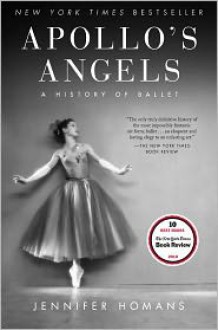Apollo's Angels: A History of Ballet
NATIONAL BESTSELLERFor more than four hundred years, the art of ballet has stood at the center of Western civilization. Its traditions serve as a record of our past. Lavishly illustrated and beautifully told, Apollo’s Angels—the first cultural history of ballet ever written—is a groundbreaking...
show more
NATIONAL BESTSELLERFor more than four hundred years, the art of ballet has stood at the center of Western civilization. Its traditions serve as a record of our past. Lavishly illustrated and beautifully told, Apollo’s Angels—the first cultural history of ballet ever written—is a groundbreaking work. From ballet’s origins in the Renaissance and the codification of its basic steps and positions under France’s Louis XIV (himself an avid dancer), the art form wound its way through the courts of Europe, from Paris and Milan to Vienna and St. Petersburg. In the twentieth century, émigré dancers taught their art to a generation in the United States and in Western Europe, setting off a new and radical transformation of dance. Jennifer Homans, a historian, critic, and former professional ballerina, wields a knowledge of dance born of dedicated practice. Her admiration and love for the ballet, as Entertainment Weekly notes, brings “a dancer’s grace and sure-footed agility to the page.”NAMED ONE OF THE BEST BOOKS OF THE YEAR BY THE NEW YORK TIMES BOOK REVIEW • LOS ANGELES TIMES • SAN FRANCISCO CHRONICLE • PUBLISHERS WEEKLY
show less
Format: ebook
ISBN:
9780679603900 (0679603905)
Publish date: November 2nd 2010
Publisher: Random House, Inc.
Edition language: English
Category:
Non Fiction,
History,
Literature,
Cultural,
American,
Art,
Russia,
Music,
Sports And Games,
Sports,
Art History

It's hard to write a comprehensive history of anything that is both thorough and engaging, and especially hard when the topic is ballet, which has a history of declining and reemerging at various times in various places around the world. Oh, and it has no system of notation for dance steps, so descr...

The first two-thirds was a fascinatingly detailed history of ballet and its relationship to the politics and events around it, if a bit heave on metaphor and a bit light on physical description. Unfortunately, in the last third it decended into rather snobbish Balanchine hagiography, which pulled it...

